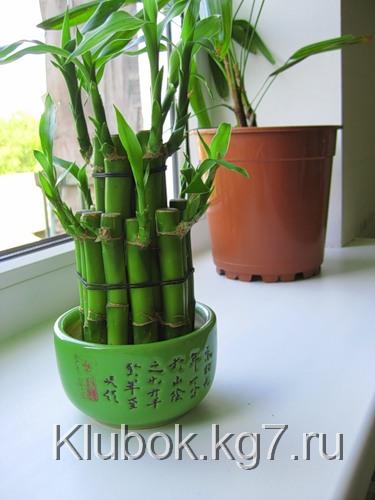Как ухаживать за орхидеей фаленопсис
Добавлено: 15.02.2012 в 18:10 Просмотров: 59118
Как ухаживать за орхидеей фаленопсисKlubokhttp://klubok.work/14/80/448/Klubokhttps://klubok.kg7.ru/css/image/top-logo.png
"Дело вкуса!" - скажет кто-то, и будет прав. Другой добавит - "Её легко выращивать!" - и тоже не ошибется. "Она красивая!" - и это несомненно. Получается, что внешняя привлекательность и простота содержания определяют популярность растения? Именно так!Фаленопсис - самая распространенная орхидея в комнатном цветоводстве. Так сложилось, что в 95% случаев на вопрос "Подскажите! Мне подарили орхидею, но я не знаю, как она называется", оказывается, что подарком стал именно фаленопсис. Чем же обусловливается такая любовь именно к этой орхидее, а не к дендробиуму или, скажем, к аскоценде?
Хотя в отношении фаленопсиса так было не всегда. Дело в том, что до 1995 года в Россию поставлялись большей частью видовые орхидеи, то есть природные виды, взятые непосредственно из естественных условий и размножаемые в открытом грунте или в оранжереях. А вот условия помещений - квартир, офисов и т. д. этим орхидеям не подходили, там они либо не раскрывали потенциала своей декоративности, то есть не цвели или цвели слабо, либо очень быстро гибли. Но после 1995 года в продажу стали поступать только гибридные орхидеи. Почему? Потому что их изъятие из природных мест обитания, зачастую варварское, приводит к угрозе исчезновения видов. На помощь пришла гибридизация - полученные гибриды размножают в промышленных условиях, гибридные орхидеи цветут ничуть не хуже природных видов. Причем селекционеры позаботились и о продолжительности цветения, и о том, чтобы орхидеи смогли лучше жить в неестественных для себя условиях.
Но забывать о том, что покупая растение, вы приобретаете живой организм, требующий неустанной заботы, нельзя никогда! К сожалению, по количеству вопросов, задаваемых на форуме GreenInfo.ru и операторам нашей телефонной службы, вывод неутешительный - люди либо не понимают этого, либо надеются на извечный русский "авось" - авось как-нибудь вырастет. Это очень досадно. При таком подходе человек мучает растение и мучается сам, не получая того, на что рассчитывал. А что в итоге? - разочарование.
Чтобы разочарований было меньше, давайте менять свое отношение к растениям и чувствовать, что мы ответственны за тех, кого приручили.
Рассмотрим основные моменты ухода за фаленопсисом, придерживаясь которых, можно долгое время наслаждаться сочной зеленью листьев и потрясающей красотой цветов-бабочек.
Освещение, температурный режим, опрыскивание
Лучше всего содержать орхидею на восточном или западном окне, можно и в глубине комнаты под люминесцентной лампой белого света или под специальной для растений фитолампой. Особенно важно досвечивание в осенне-зимний период, длина светового дня должна быть не менее 14 часов.
Оптимальная температура летом Ы25°C, зимой Ч18°C. Для стимулирования цветения важно, чтобы орхидея испытывала разницу температур в 3-5 градусов между днем и ночью. В зимний период при температуре выше +25°C цветения практически не наблюдается.
Следует учитывать большую приспособляемость фаленопсисов к условиям содержания. Конечно, при создании условий, максимально совпадающих с природными требованиями, орхидея будет дольше жить и чаще цвести.
Листья отстоянной водой комнатной температуры опрыскивать нужно регулярно, не менее 3-5 раз в день, особенно в зимний период при включенной системе отопления, когда влажность воздуха очень низка.
В период цветения опрыскивать нужно очень осторожно, стараясь не попадать на цветки – от воды на лепестках появляются коричневые пятна, что снижает декоративность и приводит к быстрому опадению цветков.
Пересадка
Менять субстрат орхидее нужно по мере разрушения коры и уплотнения субстрата. Обычно это делают 1 раз в 3-4 года. Применяют специальные субстраты «Для орхидей». Пересаживать лучше весной, когда активизируются процессы роста и орхидея легче переносит постпересадочный стресс. Пересадку в осенне-зимний период растение переживает хуже, медленнее восстанавливается. Не делайте пересадку во время цветения, иначе оно быстрее закончится.
Для фаленопсиса более подходящей емкостью являются прозрачные пластиковые горшки - корни у этой орхидеи фотосинтезируют так же, как и листья, то есть для корней нужен свет. При пересадке удаляют сухие, пустые, отмершие корни и старый субстрат. Очень осторожно отделяют корни, присосавшиеся к стенкам горшка (для этого за час перед пересадкой нужно провести полив, тщательно увлажнив субстрат и корни, тогда они отделяются от стенок горшка легче). Кусочки коры, к которым присосались корни, можно не убирать.
После пересадки в течение двух месяцев полезно добавлять в поливную воду 1 раз в 2 недели препарат Циркон из расчета 2-3 капли на стакан воды – это поможет орхидее быстрее укорениться. Любая пересадка обычно задерживает цветение на 1,5-2 месяца. Бывают случаи, когда непосредственно после пересадки орхидея зацветает – стресс от повреждения корней действует на растения по-разному.
Полив
Поливают орхидеи двумя способами – из леечки через верх горшка или методом погружения в емкость с водой.
В период цветения поливать лучше из леечки, чтобы не менять растению местоположение, из-за чего оно может сбрасывать цветы. Полив необходимо проводить таким образом, чтобы субстрат и корни просыхали 1 раз в неделю. Если держать корни в постоянно влажном или же мокром субстрате, повышается риск загнивания корней, а субстрат быстрее разрушается.
Когда фаленопсис не цветет, поливать его лучше всего методом погружения - горшочек погружают в ведро с водой на 1-2 минуты (пока не перестанут бежать пузырьки воздуха). После такого погружного полива нужно дать стечь лишней воде, и только после этого возвращать орхидею на место.
Температура поливной воды должна быть равна температуре воздуха, а еще лучше, если вода будет теплее воздуха на 3-4 градуса. Предельный показатель температуры воды +28°C (более теплая вода обжигает, обваривает корни). Вода должна быть обязательно отстоянной в течение суток, мягкой.
Если все же вода жесткая (в ней содержится много солей извести, что видно по белым разводам на листьях после опрыскивания и беловато-желтому налету на поверхности субстрата после полива), то количество извести в ней нужно снижать.
Для этого можно:
- Прокипятить воду в течение 20 минут, причем взять ее из горячего крана (в ней извести меньше, чем в холодной, потому что она уже минимум 1 раз кипела);
- Замораживать в пластиковой бутылке, срезая потом дно и сливая не замерзшую воду с солями;
- На 1 литр воды добавить щавелевой кислоты (на кончике ножа). После этого вода должна отстояться в течение 2-4 суток, пока на дне не появится белый осадок солей.
Подкормка
Удобрения используют специализированные, «Для орхидей».
Подкормку в период цветения летом проводят 2-3 раза в месяц, в период цветения осенью и зимой кормят 2-3 или 1-2 раза в месяц, но концентрацию удобрения уменьшают вдвое от указанной в инструкции.
В период отсутствия цветения можно не подкармливать или делать подкормки 1 раз в месяц, не чаще.
Для удаления лишних солей проводите промывание грунта под струей теплой воды в течение 15-20 минут 1 раз в месяц.
Размножение
В комнатных условиях легче всего размножать фаленопсис вегетативно - боковыми побегами-детками. Они могут образовываться как у основания листовой розетки, так и на цветоносе. В обоих случаях нужно дождаться образования у детки собственных корней (хотя бы одного корня), и только потом отсаживать в собственный горшочек.
Проблемы содержания
Причина большинства проблем - несоблюдение или нарушение условий содержания. Если относится к растению внимательнее, проблем будет меньше.
Что обычно пугает цветовода? Если орхидея не цветет, если желтеют или еще как-нибудь изменяются листья и т. д. Вот на эти "если" и попробую ответить:
- Орхидея не цветет, если ей недостаточно света, если ее постоянно содержать при температуре выше +25°C, если она подвергается резкой смене температуры воздуха и почвы (сквозняки), при поливе холодной водой, от недостатка или избытка питания, после недавней пересадки;
- Листья желтеют как по естественной причине - стареют (нижние листья физиологически самые старые и должны отмирать первыми – это нормально), а если желтеют, становятся вялыми верхние листья – было допущено переувлажнение или пересушивание субстрата, резкое переохлаждение, подмораживание растения;
- Если по окончании цветения цветонос стал сразу желтеть, нужно дождаться, пока он не высохнет сам и только потом его удалить. На образование нового цветоноса в зависимости от сил самого растения и от ухода за ним может уйти от полугода до двух лет. Если цветонос в течение 2-3 недель после цветения остается живым, зеленым, не убирайте его – спустя 2-4 месяца цветение на нем может возобновиться или на нем образуется детка;
- При поражении вредителями – паутинный клещ, мучнистый червец и другими применяйте препараты Агравертин, Фитоверм, Актара, Неорон (по инструкии). Против болезней (как правило, это различные гнили), достаточно соблюдения правил полива, но может потребоваться и лечение. Тогда применяйте биологический препарат, например, Фитоспорин-М (в жидком виде) - даже если использовать только его, этого хватает для излечения растений и для дальнейшей профилактики болезней.
Растения в наших квартирах зависят от нас практически полностью - мы решаем, когда полить, покормить, пересадить... Однако эти решения мы должны принимать не спонтанно, а в зависимости от потребностей растения в данный конкретный период роста и в конкретных условиях - холодно в квартире или жарко, светло или темно и т. д. Причем оценивать эти условия мы должны не только по своим критериям, но и учитывать потребности растений. Ведь для человека изменение температуры в 1 градус практически не ощутимо, а для растения это сильный стресс.
По расхожей поговорке растение, как и человек, привыкает ко всему. Давайте же сделаем так, чтобы сосуществование растения и человека было не обременительно, а максимально комфортно и полезно.












